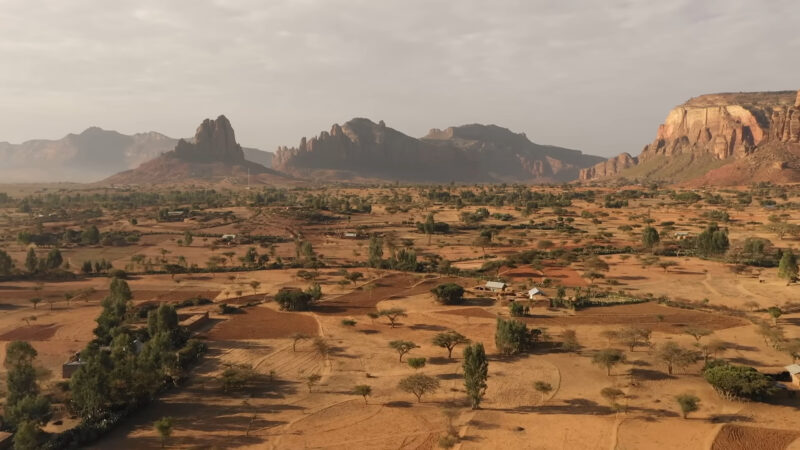Ethiopia, often called the “Land of Origins,” is home to some of the most breathtaking natural wonders in the world.
It is also an ancient civilization that is home to many things we use today.
But if you ask us, its nature is the strongest point.
Let us talk about the most important natural wonders in Ethiopia.
10) Bale Mountains
The Bale Mountains, located in southeastern Ethiopia, are a sanctuary for wildlife. It’s one of the best places to see the rare Ethiopian Wolf. This canid is the world’s rarest and can only be found in this region.
Bale Mountains National Park is not just about the Ethiopian Wolf. You can also spot the endangered Mountain Nyala. The park’s diverse ecosystem provides a haven for various species that you won’t find anywhere else.
The Sanetti Plateau, part of the park, is a vast lava plateau dotted with ancient volcanic cones. The highest peak in the range, Tullo Deemtu, reaches 4,377 meters. This makes it Ethiopia’s second-highest peak and a significant landmark.
Vegetation in the Bale Mountains ranges from Afroalpine meadows to dense forests. You’ll find giant lobelias growing up to six meters tall. These towering plants add to the surreal landscape.
If you’re into hiking, the Bale Mountains offer challenging trails with stunning views. The high-altitude terrain combines adventure with breathtaking scenery. You can trek through meadows, cross rivers, and climb peaks, all within this remarkable park.
9) Rift Valley Lakes
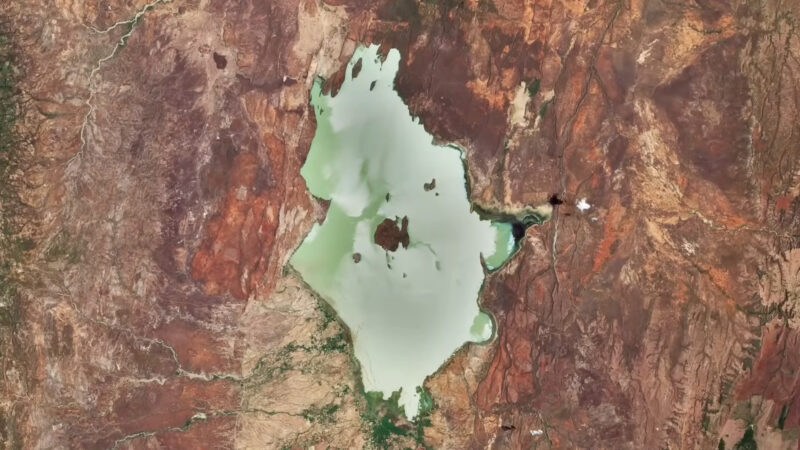
The Rift Valley Lakes in Ethiopia are a sight to behold, stretching from the northeast to the southwest. These lakes lie in the Great Rift Valley, which splits the Ethiopian highlands into two parts. Each lake has its unique features and charm.
Lake Awasa, for instance, is known for its rich birdlife. You can spot pelicans, storks, and kingfishers along its shores. The lake’s calm waters and surrounding greenery make it a peaceful retreat.
Lake Ziway is another notable lake. It is renowned for its five islands, which are home to ancient monasteries. Located about 167 km south of Addis Ababa, it offers opportunities for fishing and boating.
Lake Abaya and Lake Chamo, situated close to each other, are famous for their crocodile populations. You can often see these reptiles sunbathing on the shores. Both lakes also support local fishing communities.
The Rift Valley Lakes are perfect for fishing, birdwatching, and tourism. Visiting these lakes gives you a glimpse into the diverse ecosystems of Ethiopia.
8) Awash National Park
View this post on Instagram
Awash National Park is a stunning natural wonder located in the Great Rift Valley of Ethiopia. Situated between the Oromia and Afar regions, it lies about 215 km east of Addis Ababa.
The park spans an impressive 827 square kilometers. With elevations around 900 meters, it showcases diverse landscapes.
Established in 1966, Awash is one of Ethiopia’s oldest national parks. It was created to protect the area’s unique wildlife and habitats.
You can find a wide variety of animals in Awash, such as monkeys, antelopes, and numerous bird species. The park’s biodiversity makes it a perfect spot for nature lovers and photographers.
Awash National Park is not just about wildlife. The area also offers rich cultural experiences. Visitors can engage with local communities and explore traditional practices.
The park’s headquarters are at Gottu, near its southern boundary. This makes it accessible for visitors looking to start their adventure.
7) Omo River
The Omo River is one of Ethiopia’s most significant natural wonders. It flows through the southwestern part of the country.
Its origins begin in the highlands. The river stretches for about 760 kilometers. This river is crucial for the people living along its banks.
The lower valley of the Omo River is a UNESCO World Heritage Site. This area is known for its rich cultural diversity. Various indigenous tribes call this region home. These tribes have lived there for thousands of years.
The river also plays a vital role in the local ecosystem. It supports various species of plants and animals. People visiting the Omo River will see diverse landscapes.
These range from fertile plains to rugged terrain.
The construction of several dams along the Omo River has raised concerns. These dams aim to generate hydroelectric power. But they also impact the natural flow of the river.
It has affected the livelihoods of many local communities.
Tourists visiting the region have many activities to enjoy. You can take river cruises. You can also explore nearby national parks.
6) Lake Tana
Lake Tana is the largest lake in Ethiopia. It spans about 84 kilometers in length and 66 kilometers in width. The lake reaches a maximum depth of 15 meters.
Located in the Amhara region, Lake Tana is elevated approximately 1,788 meters above sea level. It serves as the source of the Blue Nile River.
You’ll find Lake Tana in the north-western Ethiopian Highlands. The region’s high elevation and diverse ecosystem make it a haven for wildlife.
The lake also holds significant cultural and historical importance. Its islands and shores are home to ancient monasteries. These sites house valuable manuscripts and artifacts.
Lake Tana’s clear waters and scenic beauty attract many visitors. It combines natural wonders with a deep spiritual heritage.
5) Sof Omar Caves
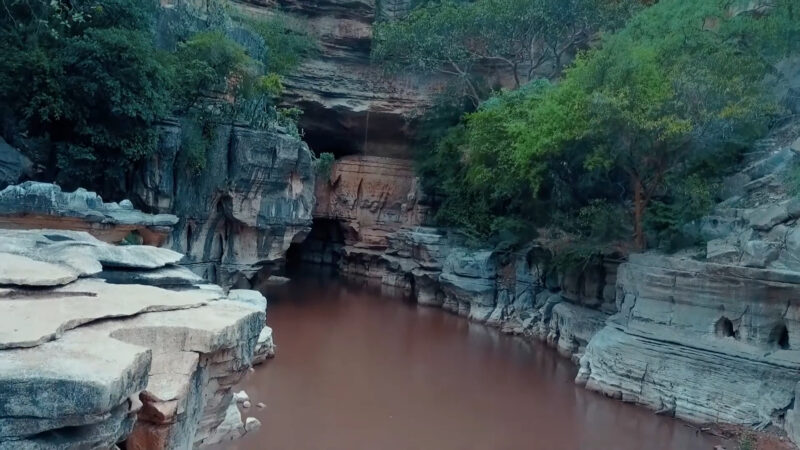
The Sof Omar Caves are a remarkable natural wonder located in southeastern Ethiopia. They are known to be the longest cave system in Ethiopia, stretching over 15 kilometers. This impressive cave network is situated in the Bale Zone of the Oromia Region.
You will find the Sof Omar Caves to be a fascinating destination full of stunning geological formations. The caves feature many entrances and are carved by the Weyib River, also known as the Gestro River. These water-carved passages create a mesmerizing labyrinth of tunnels and chambers.
The caves hold significant cultural and historical value. They have been used for religious purposes for centuries and continue to be a place of worship for people in the region. As you explore the caves, you will notice the intricate rock formations and natural beauty that make them unique.
Accessible from Bale Mountains National Park, Raaso, Seru, and even Addis Ababa, the Sof Omar Caves offer various entry points for visitors. This makes it easier for you to plan your visit and witness the awe-inspiring natural architecture within.
When you visit the Sof Omar Caves, you are not just exploring a remarkable geographic location. You are also experiencing a site steeped in history, culture, and natural beauty that showcases the diverse landscape of Ethiopia.
4) Danakil Depression
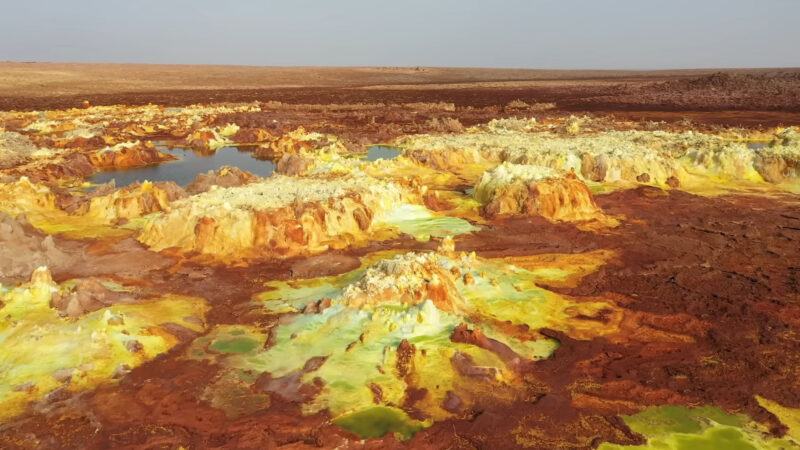
The Danakil Depression is one of Earth’s most extreme environments. Located in northeastern Ethiopia, it sits over 100 meters below sea level. This area is known for its intense heat, with average temperatures often exceeding 34° Celsius.
The landscape here is unusual and unique. You’ll find salt flats that stretch for miles and bubbling lava lakes. This region features a mix of active volcanoes and geothermal springs.
Geologically, the Danakil Depression is fascinating. It’s part of the larger Afar Triangle, where three tectonic plates pull apart. This movement creates a rift valley system.
Despite its extreme conditions, some life forms thrive here. Microorganisms have been found even in its acidic pools. Researchers study these life forms to gain insights into the possibilities of life in extreme conditions elsewhere.
Though remote and inhospitable, the Danakil Depression attracts adventurous travelers. Its alien-like landscape offers a unique destination for those willing to brave the heat.
3) Erta Ale Volcano
Erta Ale is a continuously active volcano in the Afar Region of northeastern Ethiopia. Known as one of the most active volcanoes in the world, it has a lava lake that glows with an eerie light, making it a unique natural wonder.
You can find Erta Ale in the Danakil Depression, one of the lowest and hottest places on Earth. This shield volcano stands about 600 meters high, which may not seem impressive in height, but its activity makes it remarkable.
This “smoking mountain” has been in a state of continuous eruption since 1906. The constant lava flow creates an ever-changing landscape around the volcano. Unlike many volcanoes, the persistent activity means you can often see red-hot lava any time you visit.
Getting to Erta Ale is an adventure in itself. The surrounding area is harsh and desolate, often described as otherworldly.
Yet, this doesn’t stop travelers and scientists from journeying to witness its ongoing volcanic activity. Its remote location in the East African Rift Valley adds both difficulty and allure to your visit.
2) Blue Nile Falls
View this post on Instagram
Blue Nile Falls is a stunning waterfall on the Blue Nile River in Ethiopia. Known locally as “Tis Abay,” which means “Great Smoke,” it sits about 30 kilometers downstream from the town of Bahir Dar and Lake Tana.
The falls drop over 40 meters and create a mist that looks like smoke, giving it its name. You can visit an observation platform for a breathtaking view.
The surrounding area is lush with green hills and valleys, making it a picturesque spot. You can also take a boat ride on the river to get a closer look at the falls.
Blue Nile Falls is particularly impressive during the rainy season, from June to early September. The increased water flow makes the falls even more powerful and awe-inspiring.
This natural wonder is one of Ethiopia’s top tourist attractions, drawing visitors from around the world. If you’re in Ethiopia, Blue Nile Falls is a must-see.
Fun fact: Close to the Blue Nile, you’ll find Africa’s oldest stone bridge crossing the river! For more Ethiopian fun facts check here.
1) Simien Mountains National Park
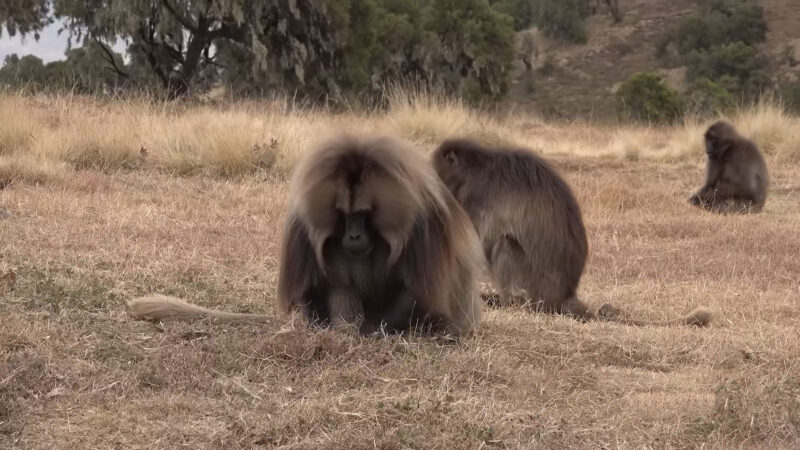
Simien Mountains National Park is one of Ethiopia’s most stunning natural wonders.
Located in the northern part of the country, this park is known for its dramatic landscapes. The area features jagged peaks, deep valleys, and high plateaus.
The park is a haven for wildlife. You can find species such as the Ethiopian wolf and the Walia Ibex.
These animals are found nowhere else in the world. Bird watchers will also be thrilled with over 130 bird species recorded here.
Trekking in the Simien Mountains is a popular activity. The park offers some of the best trekking routes in Africa. Whether you are a beginner or an experienced hiker, you will find trails suited to your level.
Besides trekking, the park’s viewpoints provide breathtaking vistas. From these spots, you can see the expansive landscape that makes the Simien Mountains so special.
With two lodges, Simien Lodge and Limalimo Lodge, you can have comfortable stays close to the park. These lodges offer a great base for exploring the natural beauty around you.
Simien Mountains National Park was established in 1969 and is a UNESCO World Heritage Site. It continues to draw visitors from around the globe, eager to experience its untouched beauty.
Summary
Your adventure in Ethiopia will leave you with lasting memories of its stunning natural wonders.
Your visit to these natural wonders of Ethiopia will be an unforgettable journey, enriching your appreciation for nature and history.

